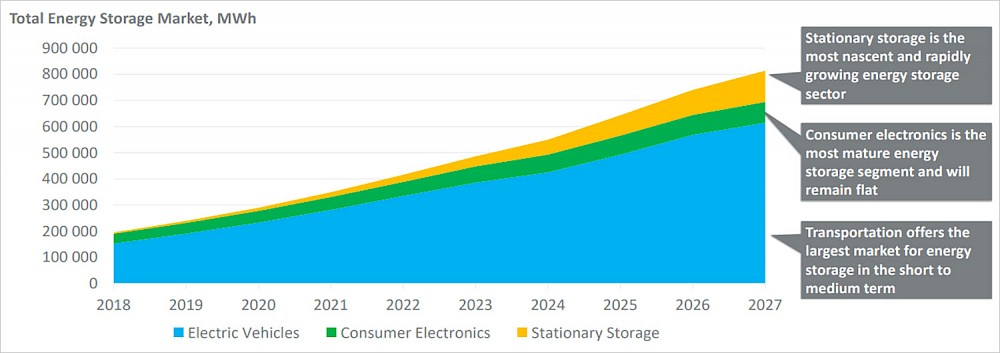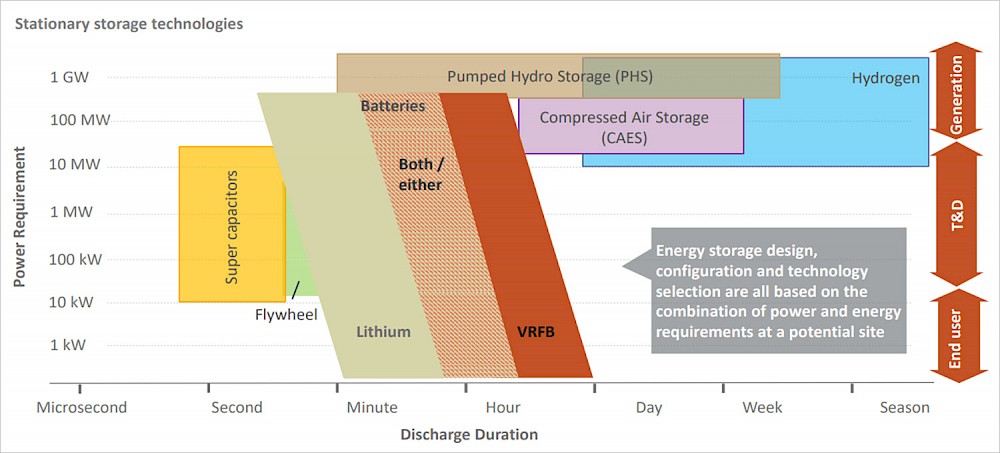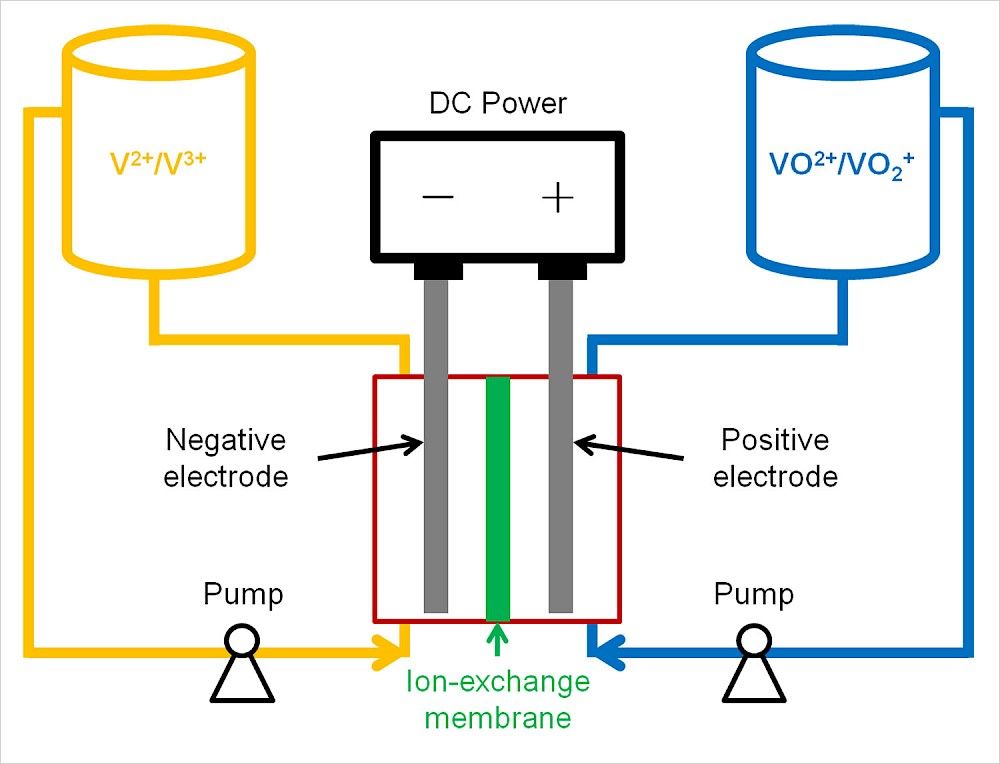Stationary storage is the most nascent and rapidly growing energy storage sector. The two largest market segments in utility energy storage for the next 10 years will require long duration energy storage, i.e. VRB, Pumped Hydro, Compressed Air and Hydrogen.
Why Vanadium Redox Batteries
- Long lifespan cycles: Ability to repeatedly charge / discharge for a lifespan of over 20 years
- 100% depth of discharge: Without performance degradation
- Lowest cost per kWh when fully used at least once daily makes
- Safe, with no fire risk from thermal runaway
- 100% of vanadium is re-usable upon decommissioning of the system
- Scalable capacity to store large quantities of energy
- Flexibility: Allows capture of the multi-stacked value of energy storage in grid applications
- Very fast response time of less than 70ms
- No cross-contamination: Only one battery element, unique among flow batteries
How it Works
Vandium redox batteries utilize the fact that vanadium can exist in four different oxidation states. This allows for the use of only one element in the battery chemistry.
- Unlike conventional batteries, electrolytes are stored in separated storage tanks, not in the power cell of the battery
- During operation these electrolytes are pumped through a stack of power cells, in which an electrochemical reaction takes place and electricity is produced
Diagram of a VRB:



